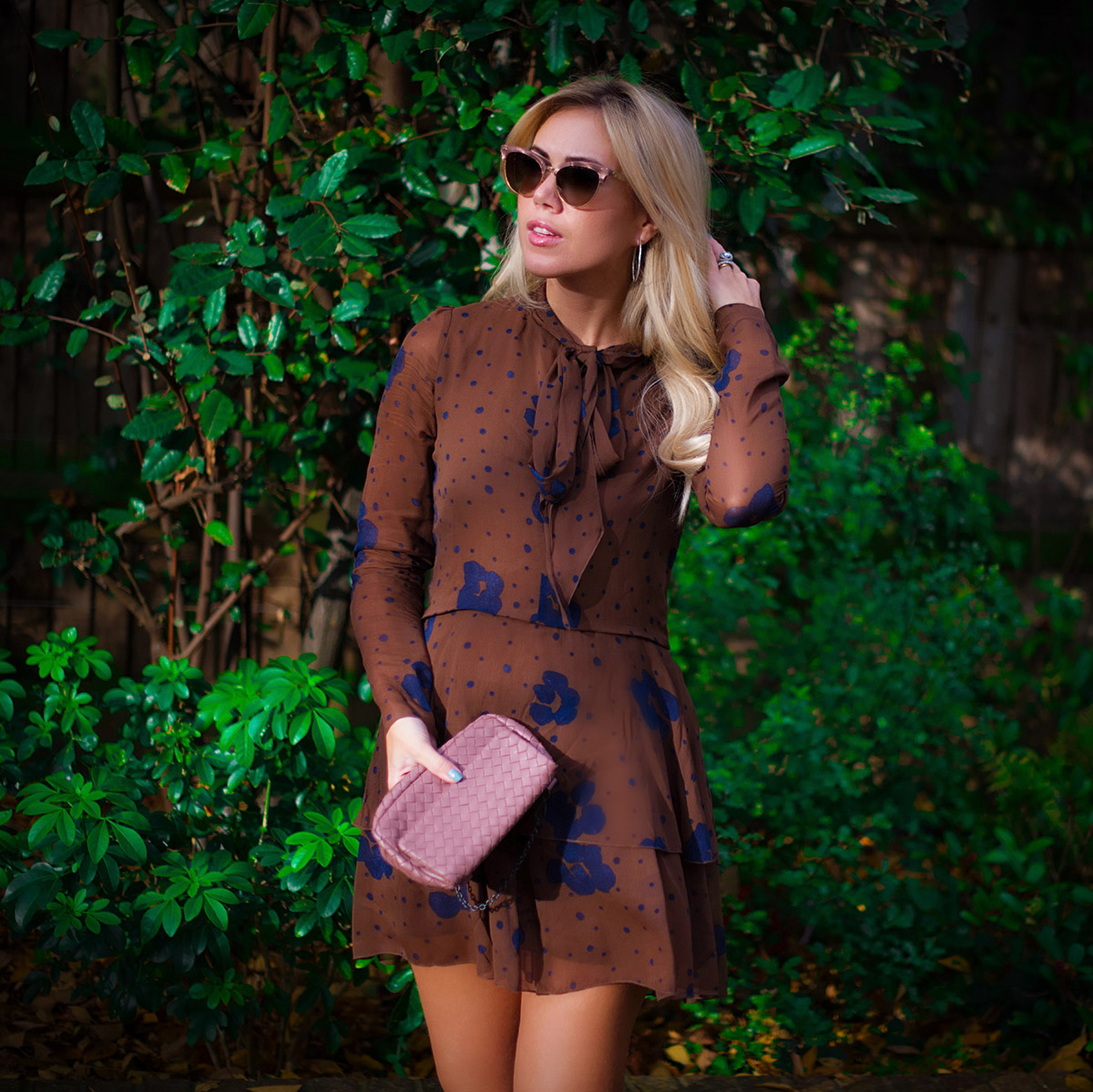 I am wearing See by Chloe Silk Dress and Bottega Veneta Bag
I am wearing See by Chloe Silk Dress and Bottega Veneta Bag
A fortnight ago Sonia Rykiel announced the closure of its diffusion line, Sonia by Sonia Rykiel. Apparently, this is the way the brand adapts to market realities. Just a couple of years ago, if we couldn’t afford the main line, we were able to buy from the brand’s democratic “sister” which allowed us to get a taste of luxury at a smidge of the cost. A prime example would be Marc by Marc Jacobs and Michael by Michael Kors. These second tier lines maintain the brand’s signature features and the same DNA, but the materials and production costs are that much cheaper.
So what happened to Sonia? The information society kept developing, leading to the popularity of online shopping and the increase in our pace of life. As a result the diffusion line products overflowed into the mass market and designers like Rykiel became associated with $200 bags rather than couture dresses or embroidered coats.
“Why would I pay that much for a pair of Marc Jacobs jeans if I can get similar ones from the diffusion collection that are almost as stylish” we ask. Plus, there’s a global economic crisis going on, so even the wealthy have started to be cautious with their money, resulting in brands losing both profit and reputation.
From the outside it seems like designers should be grateful if their diffusion lines are performing successfully, particularly in times of economic turmoil, but it isn’t that simple. Mass-market giants like Zara and H&M have craftily targeted the designer markets, offering a more commercially profitable concept and using some aggressive marketing strategies to secure their place in the fashion business. Sasha Pivovarova’s Mango campaign, Zara’s cashmere coats that aren’t far removed from Burberry’s, H&M’s endless designer collaborations… the lines between high fashion and mass market are more blurred than ever.
Now, big-name fashion houses accept the challenge thrown at them by current market realities. They either turn secondary lines into independent ones, which totally differ from the main brand just as Miuccia Prada did with Miu Miu (many don’t even realize these brands are related), or they completely shut down their diffusion lines. Often these changes are reflected in the main line too, making them more commercial and youth-oriented. Notice how skimpy silk dresses, mixed-print t-shirts and sneakers have slowly become part of the Marc Jacobs brand – a brand that rarely used to sell pieces for less than £500. Fashion brands are now targeting Millennials who aren’t willing to pay high prices. They’d rather get something affordable and have some cold hard cash left for a weekend getaway to Berlin or enrollment in a Chinese language course. Times are changing, and fashion is changing with them.



